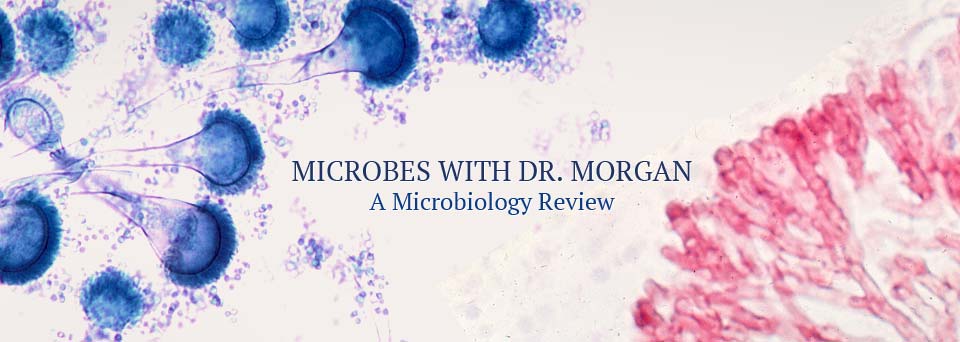1. A 65 year old man is diagnosed with peritonitis due to a perforated colon. Anaerobic culture was performed with the following results: Gamma hemolytic gray colony on anaerobic blood agar, black pigmented colony on bile esculin agar, resistant to kanamycin, colistin and vancomycin. What is the most likely organism?
a. Escherichia coli
b. Bacteroides fragilis
c. Prevotella melaninogenica
d. Clostridium perfringens
e. Porphyromonas gingivalis
2. A 35 year old male visits the Emergency Department with problems breathing over 2 weeks after recovering from a bout of diarrhea and vomiting. Physical exam: ascending muscle weakness began with his toes. A stool culture from two weeks prior grew a small grey colony on Skirrow’s blood agar plate that Gram stained a “sea gull” shaped negative rod. What is the most likely diagnosis of this patient?
a. Clostridium botulinum, botulism
b. Poliovirus, poliomyelitis
c. Campylobacter jejuni, Guillain-Barre syndrome
d. JC virus, progressive multifocal leukoencephalopathy
3. A patient in the intensive care unit developed severe watery diarrhea and pseudomembranous colitis after 5 days of antibiotics. The disease occurred as a result of which of the following?
a. Lecithinase
b. Hyaluronidase
c. Shiga toxin
d. Collagenase
e. Toxins A and B
4. A patient in the intensive care unit grows Gram positive cocci in pairs and chains from a blood culture. The organism is PYR positive, bile esculin positive, and 6.5% salt tolerant. This organism is most likely:
a. Streptococcus pneumonia
b. Streptococcus pyogenes
c. Streptococcus bovis
d. Streptococcus anginosis group
e. Enterococcus faecium
5. An 85 year old female arrives in the Emergency Department and is diagnosed with bacterial meningitis. The Cerebrospinal fluid Gram stain has numerous PMNs and a Gram positive lancet shaped cocci in pairs and short chains. The organism is most likely:
a. Listeria monocytogenes
b. Viridans group Streptococcus
c. Streptococcus agalactiae
d. Streptococcus pneumonia
e. Streptococcus anginosis group
6. A 4 year old girl arrives at the Emergency Department in renal failure. She had bloody diarrhea and severe hematological abnormalities. She loved to eat chicken pieces, hamburgers and French fries from a local restaurant. The most likely organism to cause this disease is:
a. Salmonella typhi
b. Campylobacter jejuni
c. Yersinia enterocolitica
d. Shiga toxin producing Escherichia coli
e. Vibrio vulnificus
7. A 50 year old male presents to his doctor with a history of vomiting blood. He is thought to have a peptic ulcer. He is sent for endoscopy to obtain an antral biopsy specimen. A rapid test is performed on the antral biopsy to diagnose the presence of Helicobacter pylori. This rapid test would most likely be:
a. Gram stain for curved Gram negative rods
b. Oxidase production
c. Catalase reaction
d. Urease production
e. Occult blood reaction
8. An elderly woman arrives in the Emergency Department with a headache, fever, and nuchal rigidity. The Gram stain of the CSF shows numerous polys and small gram negative rods. The organism did not grow on blood agar plate, but grew on chocolate agar when incubated in the Co2 incubator. The organism required X and V growth factors. This patient most likely has:
a. Eikinella corrodens
b. Haemophilus influenza
c. Haemophilus parainfluenza
d. Kingella kingae
e. Acinetobacter baumannii
9. A 45 year old homeless man arrives in the Emergency Department complaining of difficulty breathing and spitting up bloody sputum that could be described as “currant jelly” like. The organism most likely causing this infection is:
a. Escherichia coli
b. Klebsiella pneumonia
c. Pseudomonas aeruginosa
d. Streptococcus pneumonia
e. Serratia marcescens
10. A pregnant female has flu-like illness with possible sepsis. Blood cultures are collected and become positive after 24 hours of incubation. The organism isolated from the blood culture is a Gram positive cocci to short rod which is catalase positive, bile esculin positive and exhibits tumbling motility. This organism is most likely:
a. Enterococcus faecalis
b. Streptococcus agalactiae
c. Corynebacterium species
d. Listeria monogytogenes
e. Gemella species
----------------------------------------------------
Questions key:
1.b 2.c 3.e 4.e 5.d 6.b 7.d 8.b 9.b 10.d
---------------------------------------------------

No comments:
Post a Comment